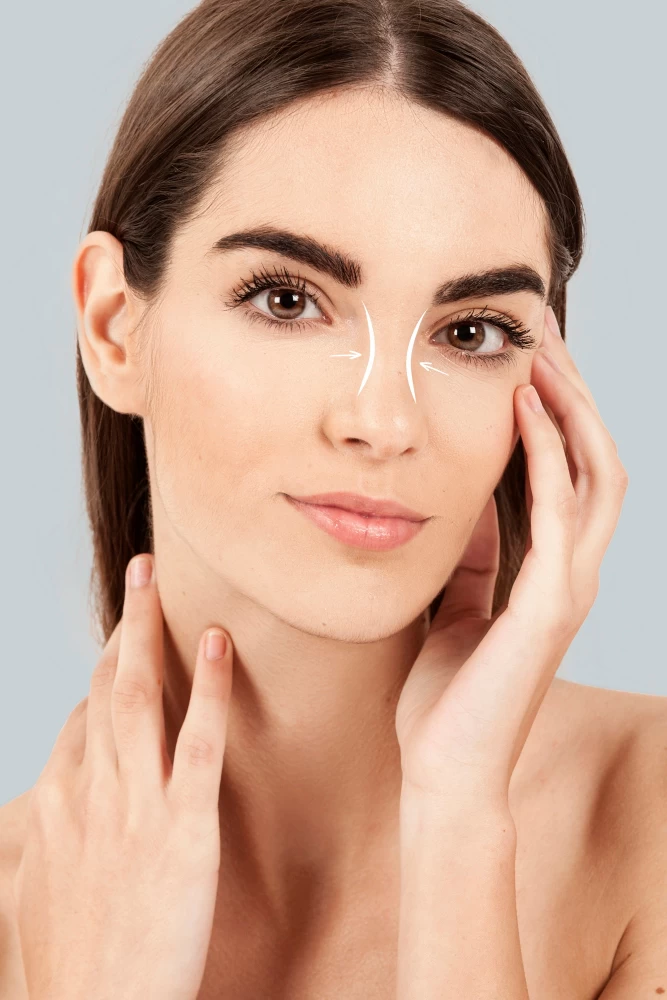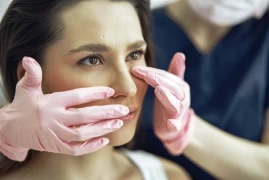
Nose Aesthetic Procedures (Rhinoplasty)
- Nose Aesthetic Procedures (Rhinoplasty)
- Purposes of Rhinoplasty
- Types of Rhinoplasty
Nose aesthetics, also known as rhinoplasty, encompass surgical or non-surgical procedures performed to correct, alter, or address irregularities in a person's nasal structure. Ear, nose, and throat (ENT) specialists are trained and proficient healthcare professionals in the field of nose aesthetics. They are experts in evaluating, planning, and executing nose aesthetic procedures.
Purposes of Rhinoplasty
Rhinoplasty can serve various purposes through surgical or non-surgical interventions. Here are common objectives of nose aesthetic surgeries:
- Aesthetic Reasons: Rhinoplasty can be performed to harmonize with a person's face or balance facial features. Desired changes can be made to the shape, size, or proportions of the nose. Rhinoplasty can achieve a smaller, larger, straighter, or more elevated appearance of the nose.
- Correction of Nasal Deviation: Rhinoplasty can be used to correct deviations in the nasal bone or cartilage. These deviations may impact nasal functionality and lead to breathing issues.
- Nasal Tip Refinement: Rhinoplasty can involve altering the shape of the nasal tip. If the nasal tip appears droopy, wide, or pointed, corrective measures can be taken for aesthetic purposes.
- Dorsal Nasal Correction: Prominences or depressions on the nasal bridge can be addressed through rhinoplasty to achieve a smoother nasal profile.
- Nostril Adjustment: Asymmetry between nostrils may occur in some cases. Rhinoplasty can rectify this asymmetry, leading to a more symmetrical appearance.
- Correction of Nasal Trauma: Nasal fractures or traumas can result in shape irregularities and deviations. Rhinoplasty may be chosen to correct such conditions.
- Improvement of Nasal Functions: Rhinoplasty can be performed not only for aesthetic reasons but also to alleviate nasal congestion and facilitate easier breathing. Procedures like reduction of nasal turbinates or correction of nasal cartilages can contribute to enhancing nasal functions.
Rhinoplasty can be pursued for personal reasons or for addressing health issues that affect nasal functionality. However, in all cases, it is important to carefully evaluate the risks and potential outcomes of rhinoplasty with an experienced medical professional before making a decision.

Types of Rhinoplasty
Nose aesthetic procedures can be categorized into two main types:
- Surgical Rhinoplasty: In this procedure, the shape and structural features of the nose are corrected or altered through surgical methods. Incisions are made on the nasal bone and cartilage, and the nose shape is corrected through surgery. Surgical rhinoplasty can be employed to modify the size, shape, tip, bridge, or nostrils of the nose.
- Non-Surgical Rhinoplasty: This procedure involves enhancing the shape and appearance of the nose using injectable fillers or other injectable substances, without surgical intervention. Non-surgical rhinoplasty may not be as permanent as surgical rhinoplasty, but it can offer a quick and less invasive option in specific cases.
Rhinoplasty can be pursued for aesthetic reasons or to improve nasal functions. Aesthetic reasons involve altering the size or shape of the nose to harmonize with a person's facial features, while functional reasons such as nasal congestion can also be addressed through rhinoplasty.
If you are considering a rhinoplasty procedure, it is advisable to consult with an ear, nose, and throat specialist. An ENT specialist will evaluate your needs and recommend the most suitable treatment option. Each patient's plan may vary, emphasizing the importance of a personalized approach.
Keep in mind that rhinoplasty is a significant decision and a procedure that requires a post-operative recovery period. Your specialist will provide you with all the information regarding the procedure and address your questions. It's important to carefully consider your decision, take a risk-free step, and make an informed choice before proceeding with surgery.



